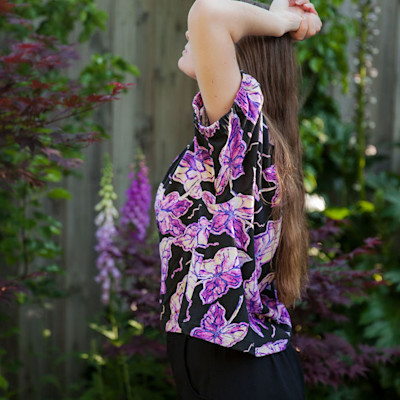Confessions of a (former) shopaholic
I recently read this article in the Guardian about how shopping secondhand can be just as addictive as buying fast fashion. It’s a sentiment I relate to as a former shopaholic. Though I must admit, I’ve been questioning just how ‘former’ this identity is lately.
We all crave the ‘new’ sometimes, it’s normal and nothing to be too concerned about. But when the craving becomes an obsession perceived as a need rather than a want, that’s when alarm bells start going off in my head.
As a rule, I try to shop secondhand wherever I can before opting for new – both for financial and environmental reasons. This hasn’t been much of an issue previously because I would only browse, and eventually buy, when I physically went to charity shops, markets and vintage stores. But the alarm bells have been increasingly clanging away since I downloaded Vinted.
This magical little app makes shopping secondhand easier than ever. You can browse by brand, filter for size, cost, and condition, and scroll through endless recommendations anywhere, at any time. You can also sell your own items. And when you do, the money goes into your balance, which you can use to purchase more items or withdraw to your bank account.
While great in theory for a self-proclaimed mindful materialist, the sheer accessibility that Vinted grants me to secondhand clothes at bargain prices is my kryptonite.
I was able to wean myself off fast fashion, because I could see the damage it was doing to people and the planet. I even committed to a year without shopping to break the habit cold-turkey-style and instead spent the time reading up on the impact of the industry. The clothes lost their sheen when I realised they was mainly oil-based, slave-made products that can barely survive a few washes. But when it comes to secondhand clothes, I’m able to convince myself that I’m doing no harm by shopping – or sometimes I can take it a step further and believe that I’m actually saving the planet by doing so. I’m giving money to charities and supporting independent, local shops. I'm a hero, right?
The problem with this sentiment is that I’m casually ignoring the overconsumption that led me to question my shopping habits in the first place. I’m letting the thrill of the bargain overpower my intention to be a mindful shopper – a mindful materialist.
In her piece for the Guardian, journalist Chloë Hamilton suggests that shopping new and facing heftier price tags is a potential strategy to quell her shopping desires. However, I think externalising the problem as a price issue isn’t the solution. And there's also no guarantee that heftier price tags equate to ethics or sustainability.
Like many addictions, shopping gives us a dopamine rush. It fills a little void with something new and shiny. But the new clothes we buy so often end up in the back of the wardrobe, donated to charity shops, or, in my case, flogged on Vinted because they no longer excite me and don’t go with anything else in my wardrobe. It’s so easy to buy things on a whim because they’re cheap and ‘sustainable’ by virtue of being secondhand. But perhaps I’m forgetting the true meaning of sustainability, ie. to sustain.
The most sustainable clothes (and the best for your wallet) are the ones you already own. Sustaining them, wearing them and looking after them is always going to be the most sustainable option. This is something I need to remind myself when those alarm bells start to chime… and maybe delete Vinted for a while.


